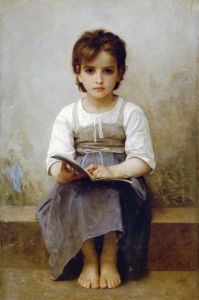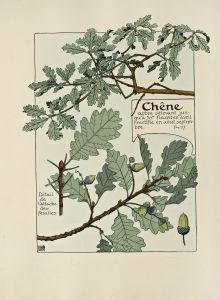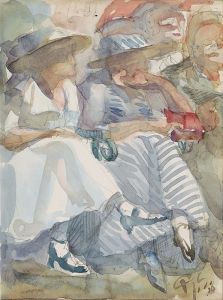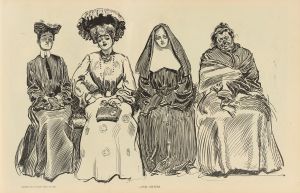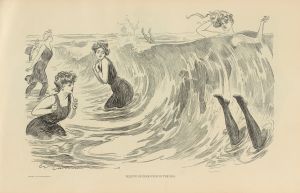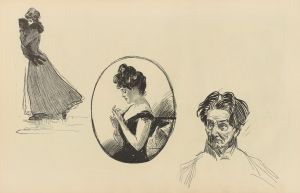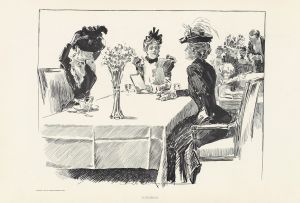
A little incident
A hand-painted replica of Charles Dana Gibson’s masterpiece A little incident, meticulously crafted by professional artists to capture the true essence of the original. Each piece is created with museum-quality canvas and rare mineral pigments, carefully painted by experienced artists with delicate brushstrokes and rich, layered colors to perfectly recreate the texture of the original artwork. Unlike machine-printed reproductions, this hand-painted version brings the painting to life, infused with the artist’s emotions and skill in every stroke. Whether for personal collection or home decoration, it instantly elevates the artistic atmosphere of any space.
Charles Dana Gibson was an American illustrator best known for his creation of the "Gibson Girl," an iconic representation of the American woman at the turn of the 20th century. His illustrations were widely published in magazines such as Life, Scribner's, and Harper's, and they played a significant role in shaping the visual culture of the era. However, specific information about a work titled "A Little Incident" by Charles Dana Gibson is not readily available in historical records or widely recognized art references.
Gibson's work generally focused on social commentary and the depiction of contemporary life, often with a humorous or satirical edge. His illustrations captured the nuances of social interactions and the evolving roles of men and women in society. The "Gibson Girl" itself became a cultural phenomenon, representing an idealized version of femininity that was independent, confident, and fashionable.
If "A Little Incident" is indeed a work by Gibson, it would likely reflect his characteristic style, which includes detailed pen-and-ink drawings and a keen observation of social dynamics. His illustrations often featured scenes from everyday life, capturing moments with wit and elegance. The subjects of his works ranged from romantic encounters to social gatherings, always with an eye for the subtleties of human behavior.
Gibson's influence extended beyond his illustrations; he was a significant figure in the art world of his time. He served as the president of the Society of Illustrators in New York and was involved in various artistic and cultural endeavors. His work not only entertained but also offered commentary on the changing social landscape of America during the late 19th and early 20th centuries.
Despite the lack of specific information on "A Little Incident," understanding Gibson's broader body of work provides context for what such a piece might entail. His illustrations were characterized by their attention to detail, expressive characters, and the ability to convey a narrative through a single image. This skill made his work highly popular and influential, contributing to the visual lexicon of the period.
In summary, while there is no detailed information available about a specific illustration titled "A Little Incident" by Charles Dana Gibson, his overall contribution to art and culture is well-documented. His illustrations remain a testament to his talent and his ability to capture the spirit of his time. If more information about this specific work becomes available, it would likely align with the themes and style that define Gibson's celebrated career.





